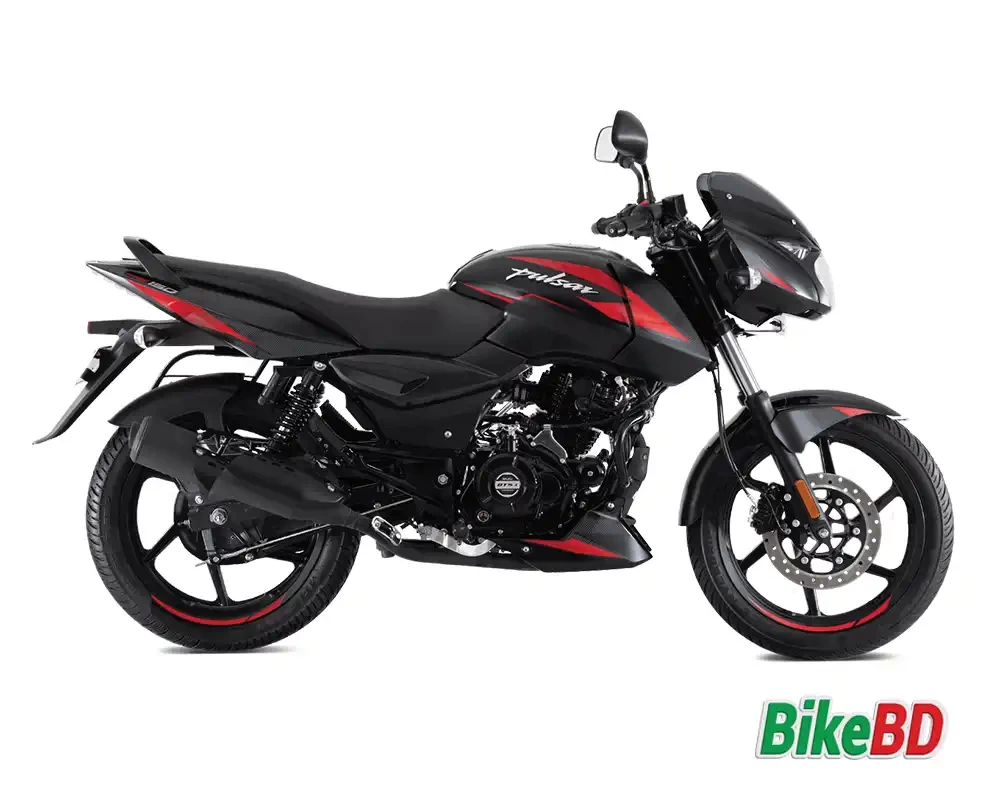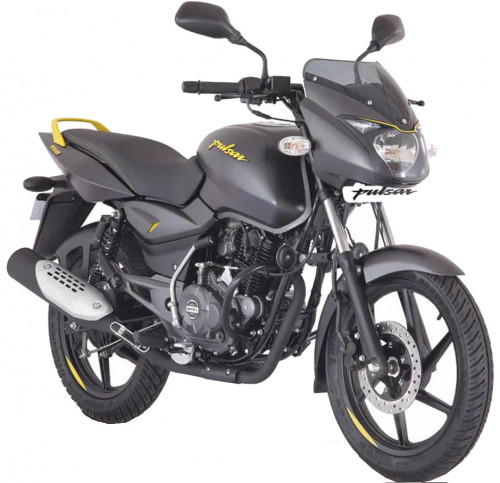Pulsar 150 Price In Bangladesh
When the roads of Bangladesh hum with the rhythm of city life, the Pulsar 150 plays a pivotal role, echoing through the streets as a favored choice among riders. In 2023, the price of the Pulsar 150 in Bangladesh has captured attention, often standing out in discussions about affordability and value. Introduced by Bajaj as the epitome of reliability, this motorcycle continues to weave its presence into the vibrant tapestry of urban transportation.
Exploring the journey of the Pulsar 150 in Bangladesh unveils a fascinating timeline of evolving price trends and market shifts. With the current price hovering around BDT 195,000 to BDT 210,000, it balances performance with economic practicality for many. Such figures not only reflect the demands of a growing market but also illustrate the model’s enduring appeal, driven by its consistent offering of superior engineering and style.

Pulsar 150 Price in Bangladesh
The Pulsar 150 motorcycle is very popular in Bangladesh due to its reliable performance and stylish look. This bike appeals to many young riders in the country. With a price range typically from BDT 195,000 to BDT 210,000, it balances quality and cost well. Many people see it as an affordable choice compared to other bikes in the market. Its reasonable price contributes to its high demand.
The pricing of the Pulsar 150 has changed over the years as the market evolved. Inflation, material costs, and import taxes affect these price adjustments. Despite these changes, Bajaj has managed to keep it competitive. Over the years, it has maintained good value for money. Consumers often appreciate its affordability and daily usability.
This bike’s price plays a crucial role in its market share in Bangladesh. Many middle-income families find it within their budget, making it a common sight on the roads. Its competitive pricing helps Bajaj capture a large market portion in the country. The price also attracts first-time bike buyers. They often opt for the Pulsar 150 due to its balance of cost, quality, and style.
Looking ahead, several factors could influence the future pricing of the Pulsar 150. Changes in economic policies and manufacturing costs might cause variations. However, the demand is likely to keep its price stable. Bajaj might introduce new features to justify any changes in cost. Riders can anticipate a balance of modern features and affordability.
Factors Influencing the Price
Several factors contribute to the price of the Pulsar 150 in Bangladesh. One of the main influences is the cost of raw materials like metal and plastic. When the prices of these materials increase, it can cause the bike’s price to rise. Additionally, local production costs and labor expenses also play a big role. These expenses affect the final retail price for consumers.
Taxes and import duties imposed by the government are vital in determining bike prices. Higher taxes lead to increased costs for importing components and finished bikes. Many companies have to adjust their prices due to these financial requirements. Import duties can significantly impact how much a consumer pays. This is especially true for imported parts or bikes.
Market demand is another important factor that impacts the Pulsar 150’s pricing. When demand is high, dealerships might adjust prices to maximize their profits. Conversely, during low-demand periods, prices might decrease to attract buyers. Seasonal trends also affect demand, such as during festivals or holiday seasons. These times can result in price fluctuations.
Exchange rates between foreign currencies and the Bangladeshi Taka influence prices too. If the Taka becomes weaker against other currencies, it affects the cost of imported materials and components. This can cause a rise in the bike’s selling price. Manufacturers often track exchange rates to set competitive, profitable rates. Keeping these factors in check ensures that pricing remains reasonable for the average consumer.
Comparing Pulsar 150 Price Over the Years
Over the years, the price of the Pulsar 150 in Bangladesh has experienced numerous changes. Initially, the bike was introduced at a price accessible to a broad range of consumers. However, as time went by, the costs began to adjust due to various market factors. These adjustments reflect changes in production costs and economic conditions. It’s interesting to see how these factors play a role in pricing.
If we look at a price comparison table of different years, patterns in the pricing shifts are evident.
| Year | Price (BDT) |
|---|---|
| 2015 | 175,000 |
| 2017 | 185,000 |
| 2020 | 200,000 |
| 2023 | 210,000 |
The table highlights how the price increased steadily until 2023. This trend showcases the mix of inflation and demand influencing market prices.
Inflation is one key element that contributes to these price hikes. As the cost of living goes up, so do production and manufacturing expenses. This naturally leads to a rise in bike prices over time. Additionally, economic events and global trends often affect these changes. Such factors can either elevate prices or stabilize them, depending on the circumstance.
The increase in demand for modern features is another reason for rising costs. As technology advances, people seek out bikes with added features, and companies aim to meet these expectations. This push for innovation often results in a higher price tag. Thus, while the Pulsar 150 remains a favorable choice, its improved features justify the price evolutions. The balance of new tech and affordability attracts ongoing interest from consumers.
Impact of Price on Pulsar 150’s Market Share in Bangladesh
The price of the Pulsar 150 significantly influences its market share in Bangladesh. When prices are kept competitive, it attracts a larger group of buyers. Affordable pricing allows more consumers to choose this bike over others in the market. As a result, Bajaj secures a sizable portion of the motorcycle sector. Price sensitivity is crucial in determining customer loyalty and purchase decisions.
Higher prices can sometimes lead to a decrease in market share. As prices increase, some potential buyers might shift their interest to more budget-friendly models. This shift affects Bajaj’s stronghold in the market. Therefore, maintaining a balance is essential. Offering promotions or discounts can help mitigate any negative impact.
On the other hand, justified price hikes due to advanced features can positively influence consumer perception. When buyers see added value, they might be willing to pay a bit more. Improved technology and enhanced features can make a big difference. This strategy helps retain existing customers while attracting new ones. Therefore, quality and price should align for maximum effect.
Comparative studies with competitor brands highlight the significance of price in market dynamics.
| Brand | Model | Price (BDT) |
|---|---|---|
| Bajaj | Pulsar 150 | 210,000 |
| Hero | Glamour | 180,000 |
| TVS | Apache 160 | 220,000 |
Such tables help in understanding where the Pulsar 150 stands in terms of pricing.
The economic conditions in Bangladesh also play a vital role in shaping the bike’s market share. Inflation and currency fluctuations impact purchasing power, directly affecting sales. Consumers may prioritize essential goods over luxury items during economic downturns. Consequently, Bajaj must be strategic in its pricing approach to keep its market position strong. Adapting to these changes is necessary for sustained growth.
Finally, consumer preferences and trends can shift over time, affecting market dynamics. As younger generations become bike enthusiasts, they often look for stylish yet affordable options. Catering to these preferences while maintaining competitive pricing keeps the Pulsar 150 attractive. Continuous market analysis helps Bajaj stay ahead of these trends. This ensures the brand remains a top choice among biking enthusiasts in Bangladesh.
Affordability Compared to Other Bikes in the Market
The Pulsar 150 is often celebrated for its affordability when compared to other bikes in its segment. Many customers appreciate its price, which aligns well with budget-friendly options. Despite offering advanced features, it manages to keep costs low. This balance makes it a preferred choice among many bikers. It ensures that more people can afford a quality motorcycle without breaking the bank.
When lined up against other popular motorcycle brands, Pulsar 150 shines due to its competitive pricing.
| Model | Price (BDT) |
|---|---|
| Pulsar 150 | 210,000 |
| Honda CB Shine | 190,000 |
| TVS Apache RTR 160 | 220,000 |
| Hero Glamour 125 | 180,000 |
This table shows that while some bikes cost less, the Pulsar offers more features at a reasonable price, providing great value.
Affordability is just one part of the decision-making process for buyers. The Pulsar 150 also offers high performance and durability, which adds to its appeal. These features ensure a longer lifespan, making it an economical choice in the long run. Riders often find this adds to their overall satisfaction. Such qualities enhance its reputation in the biking community.
Users often look at aspects like fuel efficiency, maintenance costs, and resale value alongside purchase price. The Pulsar 150 is lauded for its impressive fuel economy, which saves money over time. Moreover, its parts and maintenance are comparatively cheap and widely available. This ease of upkeep adds to its affordability over the bike’s lifetime. Many see it as an investment in practical and economical transportation.
A key factor contributing to its affordability is its local production. Manufacturing within the country helps keep prices stable and avoids excessive import costs. This local assembly system benefits both the company and the consumers. Buyers enjoy the perks of having a reliable bike without the high costs associated with foreign brands. This unique position strengthens its market presence.
Future Price Trends of Pulsar 150 in Bangladesh
As we look ahead, predicting the future price trends of the Pulsar 150 in Bangladesh involves considering several key factors. One main influence is the cost of raw materials, which can fluctuate greatly. If material prices rise, manufacturers might increase the bike’s price. Conversely, a dip in raw material costs can keep prices stable or even lead to reductions. Monitoring these trends is crucial for forecasting price changes.
Technological advancements also play a significant role in shaping future prices. As new technologies develop, the cost of integrating them into vehicles may initially spike prices. However, over time, as these technologies become standard, prices may balance out. This trend can influence what consumers expect to pay for innovative features. Staying updated on these advancements can help predict pricing directions.
Economic conditions like inflation also affect future pricing. If inflation rates stay high, the buying power of consumers could decrease, prompting companies to adjust their prices. Additionally, changes in government policies regarding taxes or import duties can shift price dynamics. Policymakers’ decisions can directly affect how much consumers end up paying. Understanding these factors provides a glimpse into potential future trends.
The demand for eco-friendly and sustainable products is another emerging trend that might impact future pricing. With increasing awareness, consumers may be willing to pay more for environmentally friendly bikes. As a result, Bajaj might introduce models with greener technologies, potentially raising prices initially. However, in the long run, mass adoption could lead to competitive pricing. Buyers often appreciate brands that prioritize sustainability.
Ultimately, consumer preferences and buying habits will steer future price directions. As tastes shift towards modern aesthetics and convenience, manufacturers will tailor their offerings to meet these desires. Hence, the Pulsar 150 might undergo subtle changes to align with these preferences. As a result, prices could evolve to reflect these innovations and meet consumer expectations. Bringing together tradition and modernity could define the Pulsar 150’s future.

Frequently Asked Questions
The Pulsar 150 is a popular motorcycle choice in Bangladesh. Riders often have questions about its features, performance, and maintenance to make informed decisions.
1. What features make the Pulsar 150 stand out from competitors?
The Pulsar 150 is favored for its powerful engine and stylish design. It boasts a 149.5 cc engine that provides excellent acceleration and efficiency. Its twin-spark technology ensures smooth power delivery, enhancing the overall riding experience. Additionally, an LED tail lamp and sporty graphics add to its appeal.
Comfort and control are prioritized with its comfortable seating and front disc brakes. Riders appreciate the Digital Fuel Injection system that optimizes fuel consumption. These features collectively make it a competitive choice in its category. For urban commuting or long rides, it offers versatile performance.
2. How does the maintenance of the Pulsar 150 compare to other bikes?
Maintaining a Pulsar 150 is relatively straightforward and cost-effective. The wide availability of spare parts ensures easy repairs or replacements. Regular servicing and checking of essential components like brakes and the engine ensures the bike performs efficiently. This keeps maintenance costs manageable for riders.
Bajaj offers a robust service network, providing reliable support and expertise. Routine checks help in detecting issues early, preventing major damages. Owners often praise Bajaj’s after-sales service, which supports long-term maintenance. Keeping the bike in top condition extends its lifespan and resale value.
3. What is the fuel efficiency of the Pulsar 150?
The Pulsar 150 is appreciated for its impressive fuel efficiency, a crucial factor for many riders. It typically delivers around 45-50 km per liter, depending on riding conditions and habits. This makes it an economical choice for daily commuting and longer trips.
Efficient fuel usage keeps running costs low and is environmentally friendly. The Digital Twin Spark Ignition system optimizes fuel burning, improving mileage. Riders who prioritize economy find the Pulsar 150 a reliable companion on the road. Regular maintenance also helps maintain its fuel efficiency.
4. How does the Pulsar 150 perform in different riding conditions?
The Pulsar 150 performs well in a variety of riding conditions due to its versatile design. Its robust engine and sturdy build help it navigate both smooth city roads and rough terrains with ease. Riders experience a balanced ride, thanks to its well-designed suspension system.
Even in traffic, the bike remains agile and responsive, making it a favorite for urban riders. For longer journeys, its comfortable seating and stable handling make it an excellent companion. The bike’s performance in diverse conditions contributes to its widespread popularity.
5. Are there any safety features on the Pulsar 150?
Safety is a significant concern for motorcycle riders, and the Pulsar 150 includes several features addressing this. It comes with front disc brakes to ensure quick and effective stopping power. The stable chassis design aids in maintaining control, reducing risks during sudden stops.
Adding to safety are its high-intensity headlamps that improve nighttime visibility. The bike’s design also includes better road grip tires, enhancing safety in wet conditions. These features collectively contribute to making the Pulsar 150 a safe option for riders. Prioritizing rider safety reflects its thoughtful design approach.
Conclusion
The Pulsar 150 remains a standout choice in the motorcycle market of Bangladesh for its balance of affordability, features, and performance. Its enduring popularity is a testament to Bajaj’s commitment to quality and innovation. With competitive pricing, it continues to attract both seasoned riders and newcomers alike. The bike’s design and efficiency ensure its relevance for years to come.
Looking ahead, future trends may bring further enhancements and new technologies to this iconic model. Its ability to adapt to changing consumer preferences while maintaining core values speaks volumes about its legacy. As it navigates the evolving market landscape, the Pulsar 150 is poised to ride at the forefront, championing the blend of cost-effectiveness and exceptional performance. The journey of the Pulsar 150 is one of continuous growth and resilience.
